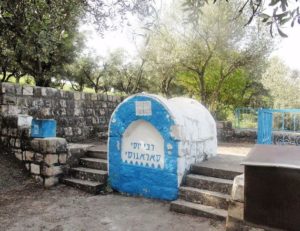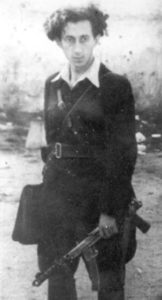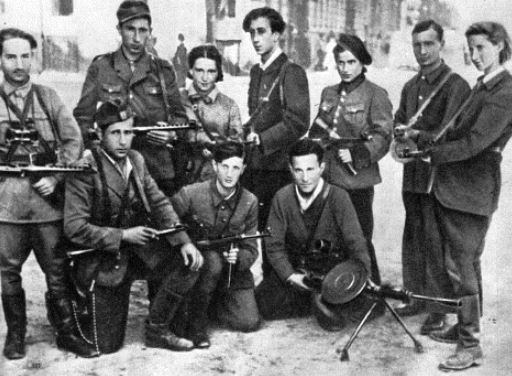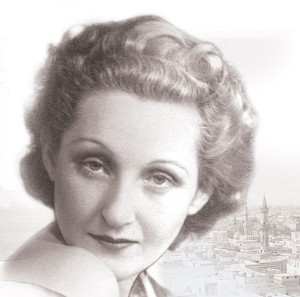Two Inspiring Sages

Tomb of Rabbi Yosef Saragossi in Ein Zeitim, Israel
Yosef Saragossi (1460-1507) was born to a religious Sephardic family, either in Saragossa, Spain, or in Syracuse, Sicily. He became a respected rabbi at a young age. Around the time of the Spanish Expulsion of 1492, Rav Saragossi settled in Tzfat. He discovered a tiny community of just 300 poorly-educated Jews, with not a single full-time rabbi among them. Rav Saragossi revived the three synagogues in the city and founded new schools, reinvigorating Jewish life. His yeshiva soon attracted students from far and wide. Within a century, Tzfat was a major centre of Jewish learning, and the capital of Jewish mysticism. There, Rabbi Yosef Karo would produce the Shulchan Arukh, still the central code of Jewish law, and there the Arizal (Rabbi Isaac Luria) revealed his Kabbalistic system, forever revolutionizing Judaism. Rav Saragossi was beloved not only by Tzfat’s Jews, but by its Muslim residents, too. In fact, the Muslim governor at the time paid two-thirds of Rav Yosef’s salary just to keep him from leaving. Rav Saragossi’s tomb remains an important pilgrimage site, and is known as a place of miracles. Because of one such miracle involving 500 white hens, he has been called Tzadik haLavan, “the White Saint”.
One of Rav Saragossi’s foremost students was David ben Shlomo ibn Abi Zimra (c. 1479-1589). He, too, was born in Spain, and was exiled around the time of his bar mitzvah. His family settled in Tzfat, and the young David studied in Rav Saragossi’s yeshiva. Becoming a renowned rabbi of his own (later known by his initials, Radbaz, as is common among Jewish sages), he moved to Egypt and became a member of its beit din, the Jewish court. He would soon be appointed Hakham Bashi, Egypt’s chief rabbi. Meanwhile, the Radbaz made some good investments, and became exceedingly wealthy. He built a new yeshiva in Cairo, and it was there that a young Isaac Luria, the Arizal, would get his start. After serving as Chief Rabbi for nearly forty years, writing a number of important books, and penning over 3000 responsa, the Radbaz retired at age 90. He left most of his wealth for the poor, then returned to the Holy Land. Although he wished to settle in Jerusalem, the Ottomans made it difficult for Jews to live there, so the Radbaz returned to Tzfat. He was immediately placed on the highest beit din, alongside Rav Yosef Karo. The Radbaz merited to live many more years, inspiring a new generation of rabbis, including the great Rabbi Chaim Vital. He was over 100 years old when he passed away.
Words of the Week
It is never too late to be what you might have been.
– George Eliot

 Abel “Abba” Kovner (1918-1987) was born in what is today Belarus and grew up in Vilnius (then part of Poland). As a young man, he was a member of HaShomer HaTzair, the Zionist youth movement. When the Nazis invaded Vilnius in 1941, Kovner escaped to a convent, but soon returned to the Vilna Ghetto to organize a Jewish resistance. At the start of 1942, Kovner secretly published a manifesto inside the Ghetto to inspire the Jews to fight back, writing that it was better to die than “go like lambs to the slaughter”. Along with several other young men, Kovner formed the United Partisan Organization, possibly the first armed underground Jewish group in Nazi Europe. Before they could launch their first large-scale attack, the Vilna Ghetto was liquidated in 1943, forcing the group to flee to the surrounding forests. From there, they launched a guerrilla warfare campaign against the Nazis. The small group began calling themselves “the Avengers” (HaNokmim) and were successful enough to draw the attention of the Red Army. They would go on to coordinate with the Soviets to crush the Nazis in Eastern Europe. Once the fate of the Nazis was sealed towards the end of 1944, Kovner was among the founders of a new group, called Bricha (“Escape”), which worked to get Jewish refugees out of Europe and to the Holy Land. Over the next couple of years, they would successfully move 250,000 Holocaust survivors to Israel. Having seen first-hand the horrific devastation inflicted by the Nazis, Kovner yearned for revenge. He started yet another group, called Nakam (“Vengeance”), seeking to punish Germany for the Holocaust. “Plan B” was to poison the water supply in Allied prisoner-of-war camps where Nazi SS soldiers were kept. The far more controversial and shocking “Plan A” was to poison the water supplies of several major German cities in order to kill 6 million Germans, one for each Jew lost in the Holocaust. Thankfully, Plan A was soon abandoned, though Kovner was still arrested by the British and held in a Cairo prison for several months. He did aim to accomplish Plan B, and Nakam members infiltrated a POW camp bakery in April 1946, coating the loaves of bread with arsenic. Over two thousands German soldiers fell ill, though no deaths were reported. In December 1947, Kovner joined the Haganah and fought in Israel’s Independence War as a captain of the Givati Brigade. Following this, he lived out the remainder of his life in a kibbutz, working tirelessly to strengthen the nascent state. He also helped to design several Holocaust museums, and testified at the Eichmann trial. More famously, Kovner wrote a series of poetry books (in Hebrew and Yiddish) describing the struggles he faced during the Holocaust and in Israel’s early years. This made him one of the country’s most celebrated poets and writers. For this, he won the Israeli Prize for Literature in 1970. A heavy smoker, Kovner succumbed to tracheal cancer before his 70th birthday.
Abel “Abba” Kovner (1918-1987) was born in what is today Belarus and grew up in Vilnius (then part of Poland). As a young man, he was a member of HaShomer HaTzair, the Zionist youth movement. When the Nazis invaded Vilnius in 1941, Kovner escaped to a convent, but soon returned to the Vilna Ghetto to organize a Jewish resistance. At the start of 1942, Kovner secretly published a manifesto inside the Ghetto to inspire the Jews to fight back, writing that it was better to die than “go like lambs to the slaughter”. Along with several other young men, Kovner formed the United Partisan Organization, possibly the first armed underground Jewish group in Nazi Europe. Before they could launch their first large-scale attack, the Vilna Ghetto was liquidated in 1943, forcing the group to flee to the surrounding forests. From there, they launched a guerrilla warfare campaign against the Nazis. The small group began calling themselves “the Avengers” (HaNokmim) and were successful enough to draw the attention of the Red Army. They would go on to coordinate with the Soviets to crush the Nazis in Eastern Europe. Once the fate of the Nazis was sealed towards the end of 1944, Kovner was among the founders of a new group, called Bricha (“Escape”), which worked to get Jewish refugees out of Europe and to the Holy Land. Over the next couple of years, they would successfully move 250,000 Holocaust survivors to Israel. Having seen first-hand the horrific devastation inflicted by the Nazis, Kovner yearned for revenge. He started yet another group, called Nakam (“Vengeance”), seeking to punish Germany for the Holocaust. “Plan B” was to poison the water supply in Allied prisoner-of-war camps where Nazi SS soldiers were kept. The far more controversial and shocking “Plan A” was to poison the water supplies of several major German cities in order to kill 6 million Germans, one for each Jew lost in the Holocaust. Thankfully, Plan A was soon abandoned, though Kovner was still arrested by the British and held in a Cairo prison for several months. He did aim to accomplish Plan B, and Nakam members infiltrated a POW camp bakery in April 1946, coating the loaves of bread with arsenic. Over two thousands German soldiers fell ill, though no deaths were reported. In December 1947, Kovner joined the Haganah and fought in Israel’s Independence War as a captain of the Givati Brigade. Following this, he lived out the remainder of his life in a kibbutz, working tirelessly to strengthen the nascent state. He also helped to design several Holocaust museums, and testified at the Eichmann trial. More famously, Kovner wrote a series of poetry books (in Hebrew and Yiddish) describing the struggles he faced during the Holocaust and in Israel’s early years. This made him one of the country’s most celebrated poets and writers. For this, he won the Israeli Prize for Literature in 1970. A heavy smoker, Kovner succumbed to tracheal cancer before his 70th birthday.
